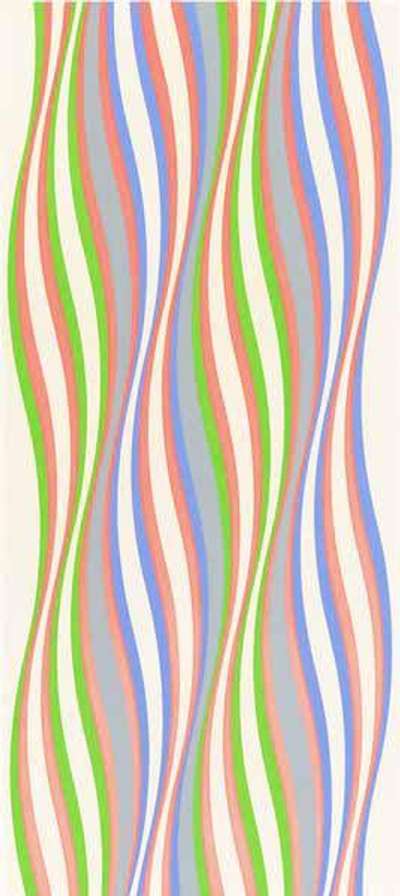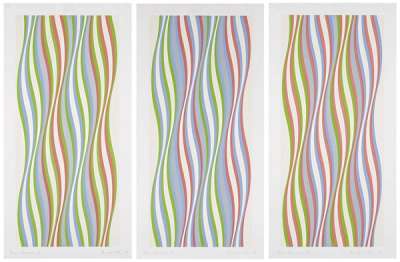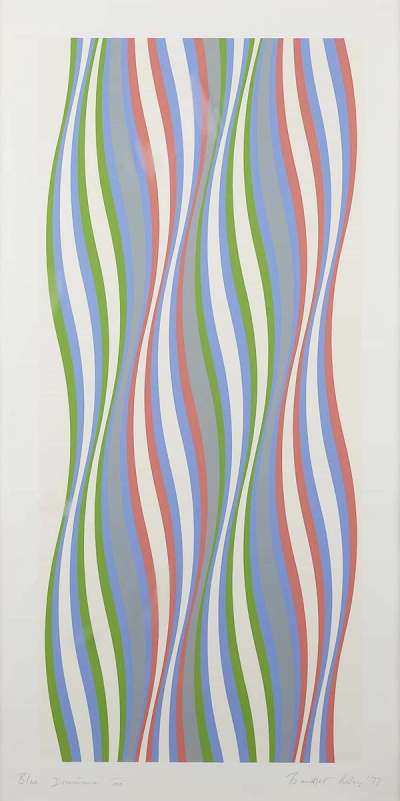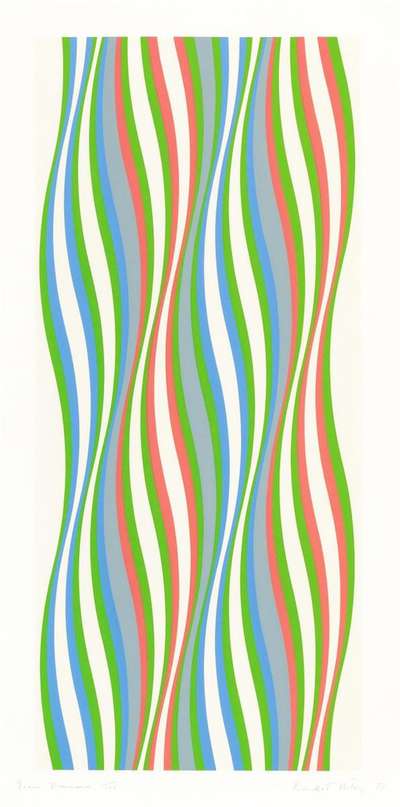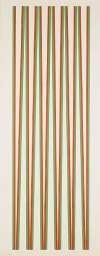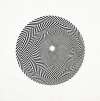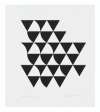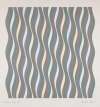Dominance
Bridget Riley’s Dominance series (1977) presents undulating lines in muted hues across three screen prints. The series is typical of Riley’s experimentation with colour from 1967, and her development of Polychrome Op Art. Like Riley’s oeuvre in its entirety, the oscillating lines in Dominance challenge the viewer’s perception with optical illusion.
Bridget Riley Dominance For sale
Dominance Value (5 Years)
Works from the Dominance series by Bridget Riley have a strong market value presence, with 41 auction appearances. Top performing works have achieved standout auction results, with peak hammer prices of £65000. Over the past 12 months, average values across the series have ranged from £6500 to £65000. The series shows an average annual growth rate of 9.78%.
Dominance Market value
Auction Results
| Artwork | Auction Date | Auction House | Return to Seller | Hammer Price | Buyer Paid |
|---|---|---|---|---|---|
 Blue Dominance Bridget Riley Signed Print | 12 Dec 2024 | Forum Auctions London | £13,600 | £16,000 | £20,000 |
 Red Dominance Bridget Riley Signed Print | 3 Dec 2024 | Bonhams Knightsbridge | £5,525 | £6,500 | £8,500 |
 Green Dominance Bridget Riley Signed Print | 3 Dec 2024 | Bonhams Knightsbridge | £6,375 | £7,500 | £9,500 |
 Green Dominance, Blue Dominance, Red Dominance Bridget Riley Signed Print | 20 Apr 2023 | Leslie Hindman Auctioneers, Chicago | £42,500 | £50,000 | £70,000 |
Sell Your Art
with Us
with Us
Join Our Network of Collectors. Buy, Sell and Track Demand
Meaning & Analysis
Dominance demonstrates the infusion of colour that Riley brought into her works during the 1970s, creating what became known as ‘polychrome op art.’ In 1967, Riley began to infuse her works with colour in what was to be known as Polychrome Op Art, moving away from her solid monochrome colour scheme of previous years. Embracing the relativity of how one perceives colour, Riley revelled in exploring the visual and emotional effects of certain colour combinations, adding another layer of optical illusion to her artwork. Utilising colour to achieve new optical effects, Riley saw shape and colour as “ultimate identities” interacting on the two-dimensional canvas surface.
In Riley’s Dominance series, her vertical stripe paintings are developed further as the lines appear to spin and oscillate. Riley’s lines move like the waves near her childhood home in Cornwall, which visually stimulated Riley and influenced her artwork to a great extent. Each print, named after a different colour, is a carefully constructed optimisation of the sequence of colours, in which a different colour dominates, as the title suggests. The selection of the colour palette is vital to and intensifies the visual effect of the works.
The process of screen printing excludes the interference of human handling, a factor Riley favours as she seeks for her artwork to be direct and precise. On this, Riley claims: “I wanted the actual content of the paintings to come through unchecked by any kind of touch, so that you could see the strength or weakness of something without any barrier”.
Displaying the musical method of varying colour harmonies, Riley’s Dominance is an exploration into the powerful potential of colour and its inherent effects on the human eye and emotion. Reducing painting to its essentials, namely colour and form, this series epitomises Riley’s lifelong commitment to abstraction and represents the artist’s first forays into experimenting with colour combinations. Since the conception of the Dominance series, Riley has continued to develop one of the most recognisable styles in contemporary art.
